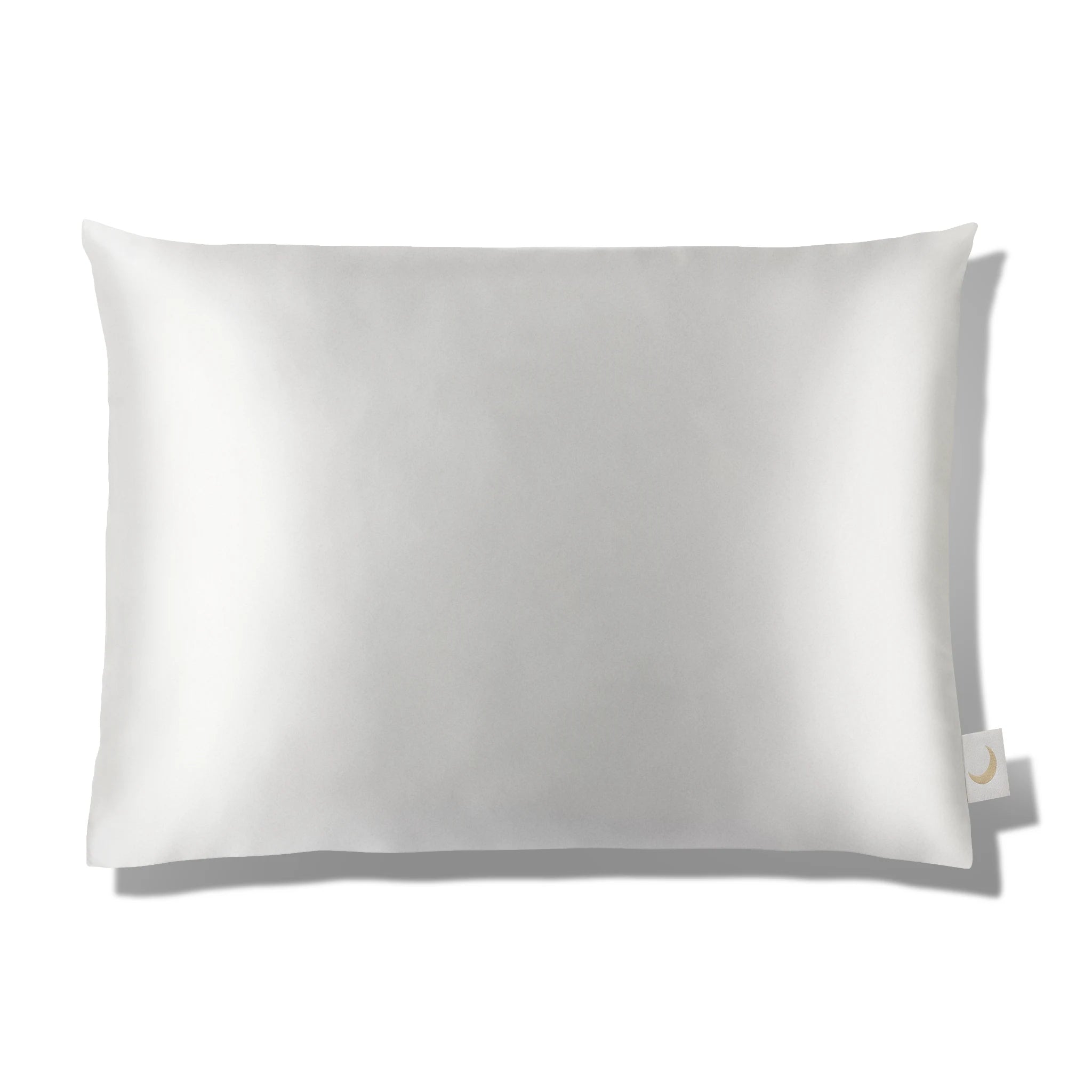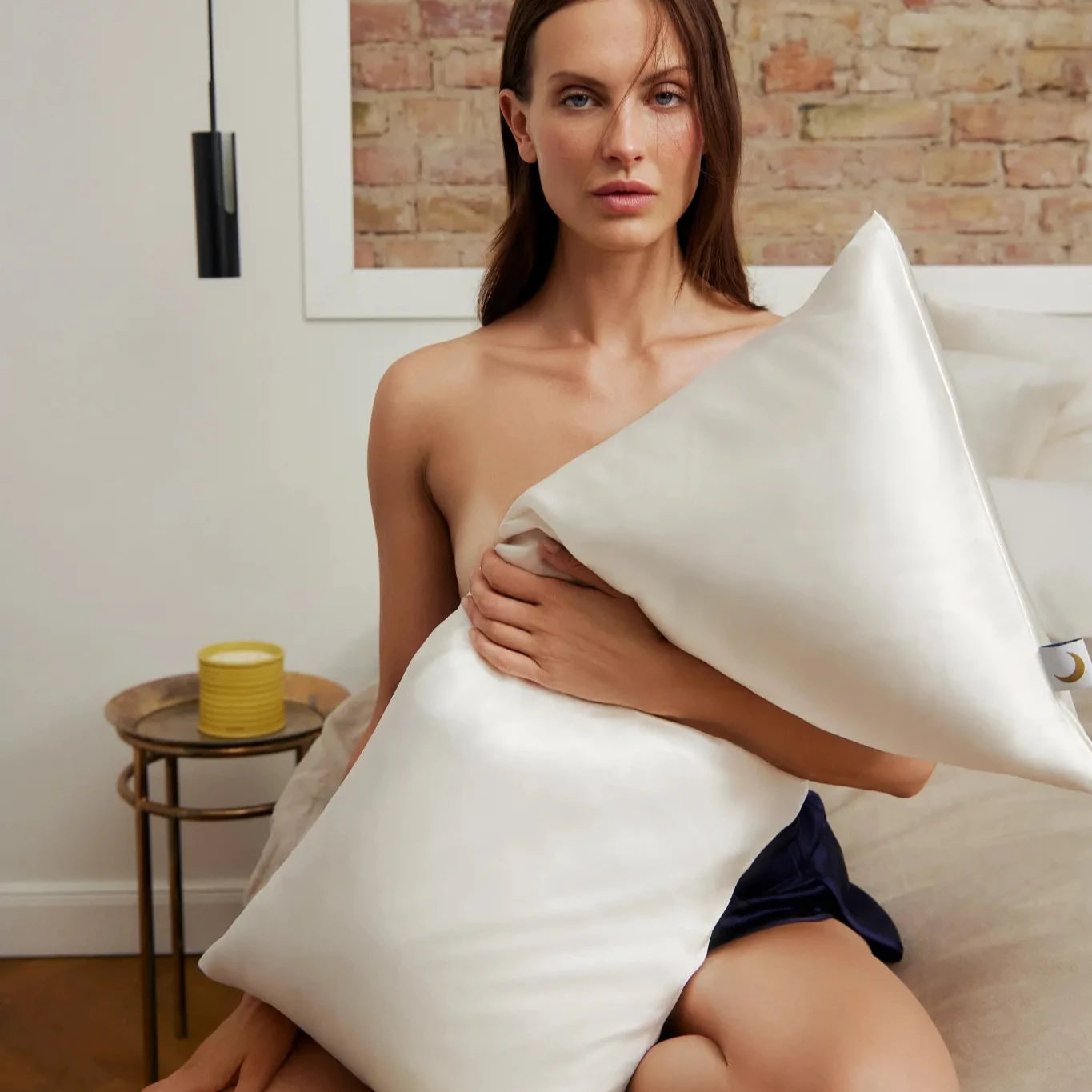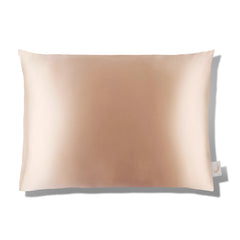4 min read. Did you ever think that your pillowcase could be a breeding ground for bacteria and trigger inflammation and acne?
1. Are Silk Pillowcases Good for Acne-prone Skin?
We all know that after a good night's sleep we might feel rejuvenated. But can an actual pillowcase swap support clearer and smoother skin? Pillows can get pretty dirty. We sleep a third of our lives. While we sleep, oils and skin cells become embedded in our pillow. Read on why we see a silk pillowcase as the cherry on top of every skincare regime to support a healthier and cleaner sleep environment.
2. Is a Silk Pillowcase Better for the Skin?
A silk pillowcases feels gentler on our skin and we might realise the difference once we got used to silk and spend the first night back with the old friend cotton, which now feels rougher than ever before. That exact friction may irritate sensitive and acne-prone skin during the night, cause more inflammation and irritation and worsen acne and wrinkles.
Silk is a densely woven fabric. Its smooth surface helps reduce friction and therefore puffiness and swelling. Silk's dense structure makes it also hypo-allergenic, antifungal and antimicrobial: it repels dust, dust mites and bacteria. The lower the bacteria count on our pillowcase, the fewer breakouts provoked.
3. Does My Pillowcase Cause Acne? Acne Triggers & Inflammation
Typical acne triggers are hormones, stress, medication or environmental factors. But excess irritation through movement-caused friction may irritate acne-prone skin further. Here is what happens with a cotton pillow during our beloved beauty sleep: cotton may sop up the natural oils and bacteria from our hair and skin, which can lead to quite a build-up after a few nights and may transfer bacteria right back onto our skin (are you picturing a petri dish, too?). 🧫🦠
Whereas silk presents a kinder and cleaner surface in contact with our skin. Silk's natural antimicrobial properties help to keep bacteria counts low. Silk causes less friction than conventional fabrics. Silk is the fibre, that is most similar to our skin and hair. Silk is a natural protein and has a similar pH value to hair and skin. All those benefits make it rather soothing than irritating.
4. The Skin Microbiome & Inflammation
Our skin is the home of millions of bacteria, fungi and viruses that compose the microbiome and our physical barrier. If that microbiome is altered, our skin's functions drop and skin diseases may occur. Good bacteria regulate our skin's ph value and protect us form UV-radiation, pollution and bad bacteria. If it is well balanced, we benefit from a youthful and healthy look.
Our skin's microbiome can be damaged by outside factors such as harsh treatments, touching it with dirty fingers, contact with dusty telephones, filthy make-up brushes or an unclean pillowcase. The latter is no small one since we ideally spend a third of our day on it. But which pillowcase may help avoid that bacterial paradise if we want to avoid washing it daily?
5. The Best Pillowcases for Acne: a Copper, Satin or Silk Pillowcase?
Don't be fooled by a silk-like, silky or satin pillowcase, that could be made of any fabric, such as polyester. Only a genuine silk pillowcase will ensure an organic, natural fibre. Read on in our article on how to spot the difference: satin vs silk.
Research suggests that copper has antimicrobial and healing effects. But guess what? Organic silk naturally holds those properties, too. The less industrially processed silk is, the more we benefit from its properties. Moreover is organic silk temperature and moisture regulating. That means we sweat less in summer and stay cozy and warm in winter. It also keeps hair and skin moisturised as it won't soak up our natural sebum (aka our own moisturiser). Silk will also soak up less of our precious hair- and skincare products and keeps them where they are supposed to work while we are deeply asleep.
6. How Often Shall I Wash my Pillowcase?
Although silk is one of the most hygienic fabrics, we recommend to taking off make-up and washing our faces every night to avoid inflammation, breakouts and premature ageing of the skin. That way we promote an undisturbed nightly recovery mode of our skin.
Despite being a hygienic material, we recommend to wash a silk pillowcase every or every other week. Read on about how to wash silk and the countless benefits of silk pillowcases. 🫧🫧🫧
tl;dr
Silk pillowcases reduce friction and therefore irritation. Silk is a naturally clean fabric that prevents bacteria build-up, thus promoting a balanced microbiome and fewer breakouts. The dense silk fibre is ultra-hygienic: hypoallergenic, anti-fungal and antimicrobial as it repels dust and bacteria. Silk is the fibre most similar to our skin and hair and has a similar ph value. We benefit from an organic peace silk pillowcase. The closer silk is left to its natural state, the greater its beautifying superpowers.



















